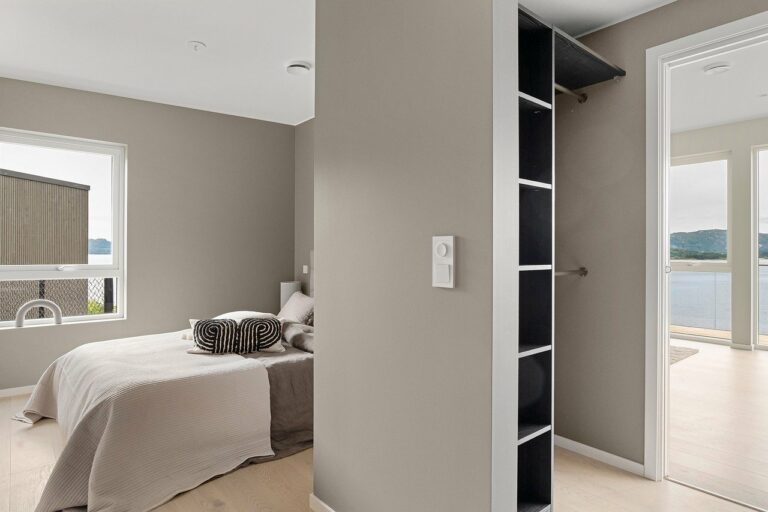Incorporating Sustainable Architecture Principles into Home Design
As the world becomes increasingly aware of the importance of sustainability in all aspects of life, the concept of sustainable architecture is gaining momentum. Sustainable architecture is a design approach that seeks to minimize the environmental impact of buildings by incorporating energy-efficient technologies, utilizing eco-friendly materials, and designing spaces that promote the well-being of occupants. In this article, we will explore the principles of sustainable architecture and how they can be incorporated into the design of residential homes.
Understanding Sustainable Architecture
Sustainable architecture, also known as green architecture or eco-friendly architecture, is a holistic approach to design that considers the environmental, social, and economic impacts of buildings. It aims to reduce the negative effects of construction and operation on the environment while creating healthy and comfortable living spaces for occupants. Sustainable architecture principles can be applied at every stage of the design and construction process, from site selection and material sourcing to energy use and indoor air quality.
Key Principles of Sustainable Architecture
1. Energy Efficiency
One of the primary goals of sustainable architecture is to reduce energy consumption and minimize the carbon footprint of buildings. This can be achieved through the use of energy-efficient building materials, smart design strategies that optimize natural light and ventilation, and the integration of renewable energy sources such as solar panels or wind turbines.
2. Passive Design
Passive design principles focus on maximizing the natural resources available on site, such as sunlight, wind, and natural shade, to reduce the need for artificial heating, cooling, and lighting. Passive design strategies include orienting buildings to maximize solar gain in winter and reduce heat gain in summer, using thermal mass to store heat, and designing spaces that promote natural ventilation.
3. Water Conservation
Water is a precious resource that must be conserved and used efficiently in sustainable architecture. Strategies for water conservation include incorporating rainwater harvesting systems, using low-flow fixtures and appliances, and designing landscaping that minimizes water usage.
4. Material Selection
The materials used in building construction have a significant impact on the environment, from the extraction of raw materials to manufacturing, transportation, and disposal. Sustainable architecture promotes the use of eco-friendly materials such as recycled steel, reclaimed wood, and low-impact concrete to reduce resource depletion and minimize waste.
Benefits of Sustainable Home Design
There are numerous benefits to incorporating sustainable architecture principles into home design. Some of the key advantages include:
1. Energy Savings
By designing energy-efficient homes that reduce the need for heating, cooling, and lighting, homeowners can save money on utility bills and reduce their carbon footprint.
2. Improved Indoor Air Quality
Sustainable homes are designed to promote healthy indoor environments by using non-toxic materials, proper ventilation, and moisture control systems that reduce the risk of mold and indoor pollutants.
3. Increased Property Value
Homes that are built with sustainable principles in mind are often more attractive to buyers and can command higher resale values due to their energy efficiency and environmental benefits.
How to Incorporate Sustainable Architecture Principles into Home Design
When designing a sustainable home, there are several key considerations to keep in mind:
1. Site Selection
Choose a site that maximizes natural light and ventilation, minimizes the impact on local ecosystems, and promotes water conservation through landscaping design.
2. Energy-Efficient Design
Optimize the building’s orientation, layout, and envelope to reduce energy consumption and maximize the use of renewable energy sources such as solar panels or geothermal heating systems.
3. Material Selection
Use eco-friendly materials that are sustainably sourced, low in embodied energy, and durable to minimize the environmental impact of construction and reduce long-term maintenance costs.
4. Water Conservation
Implement water-saving fixtures, greywater recycling systems, and drought-tolerant landscaping to reduce water usage and minimize runoff pollution.
5. Indoor Air Quality
Design for natural ventilation, use non-toxic materials, and install air purification systems to maintain healthy indoor air quality for occupants.
FAQs
Q: What are the key principles of sustainable architecture?
A: The key principles of sustainable architecture include energy efficiency, passive design, water conservation, and material selection.
Q: How can I incorporate sustainable architecture principles into my home design?
A: You can incorporate sustainable architecture principles into your home design by choosing a site that maximizes natural resources, optimizing energy use, using eco-friendly materials, conserving water, and promoting indoor air quality.
Q: What are the benefits of sustainable home design?
A: The benefits of sustainable home design include energy savings, improved indoor air quality, increased property value, and reduced environmental impact.
By incorporating sustainable architecture principles into home design, homeowners can create spaces that are not only environmentally friendly but also healthy, comfortable, and cost-effective. With the increasing emphasis on sustainability in the built environment, adopting green building practices is essential for the future of residential architecture.







